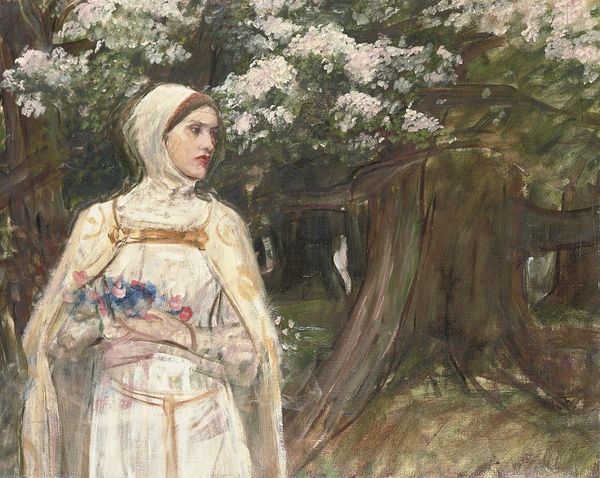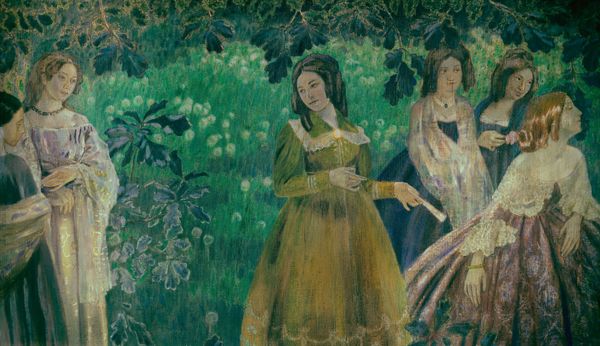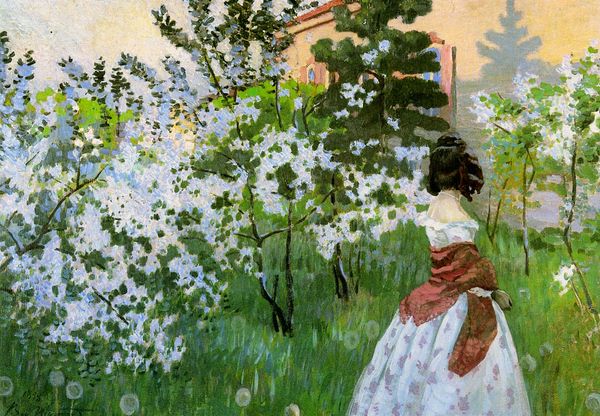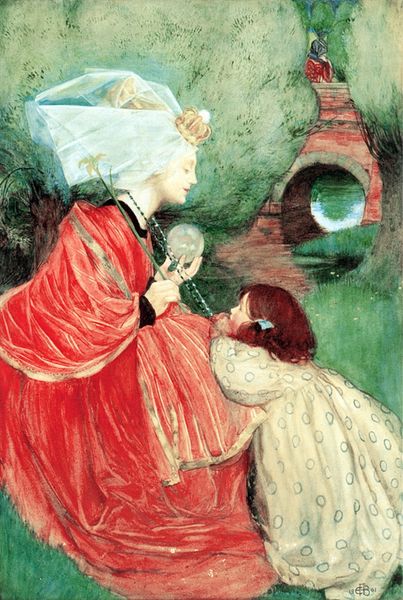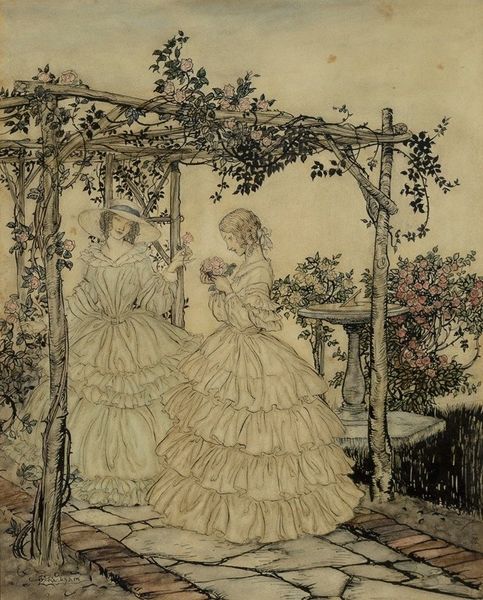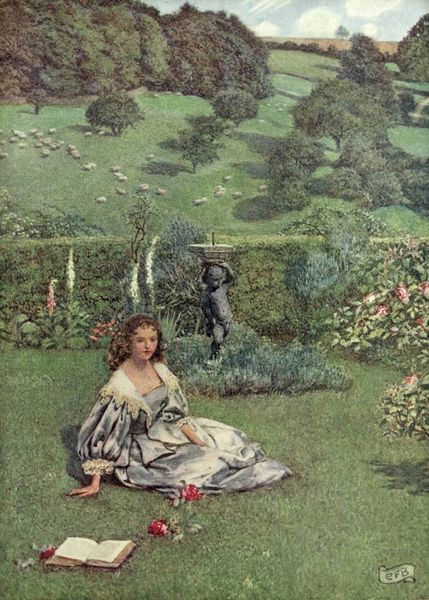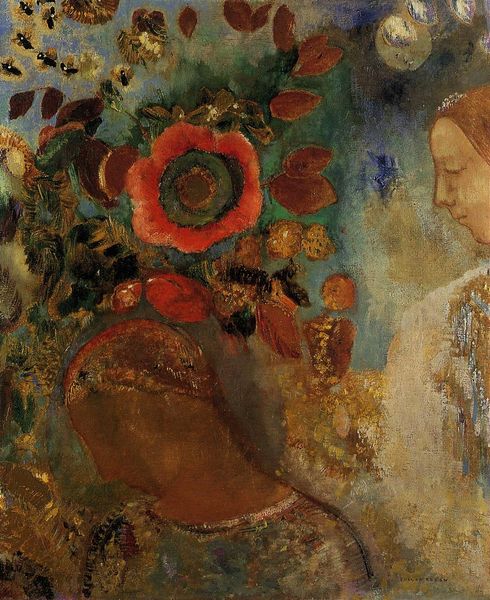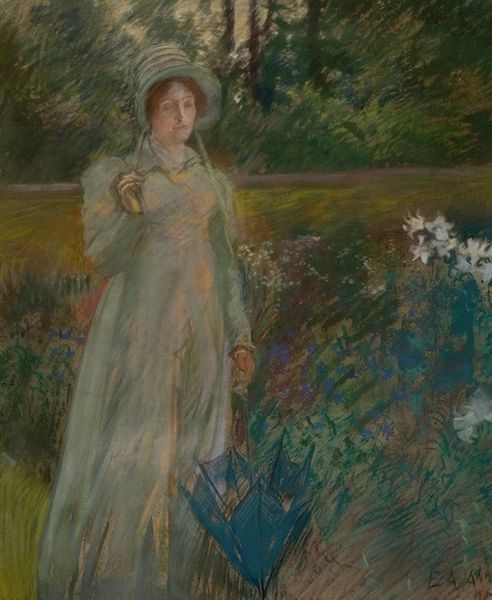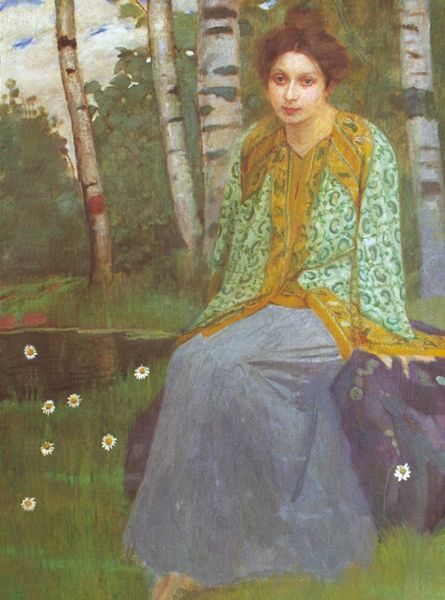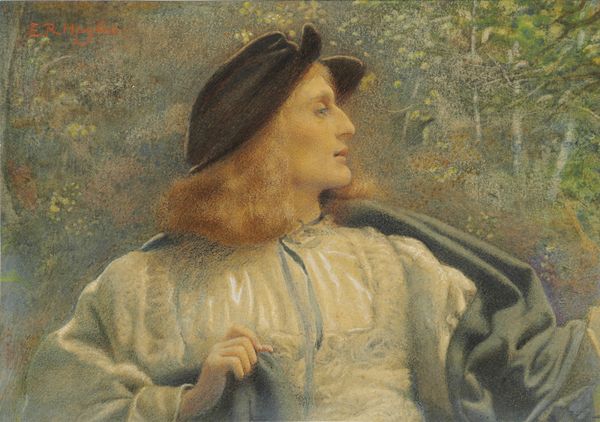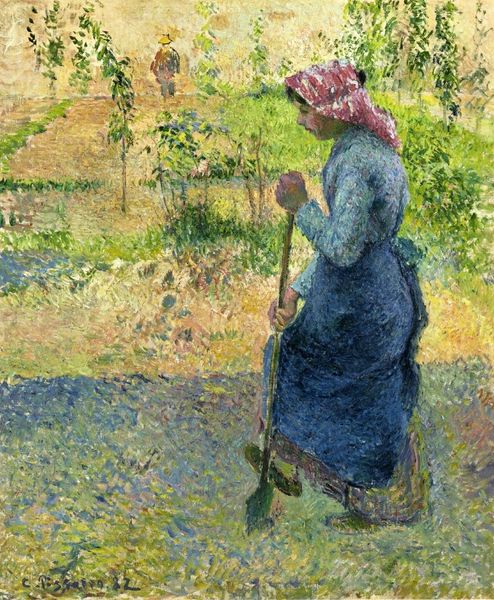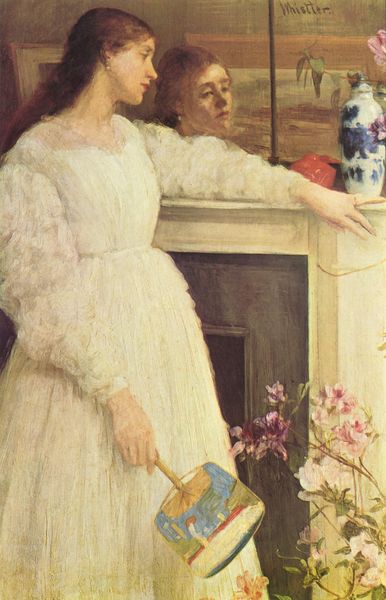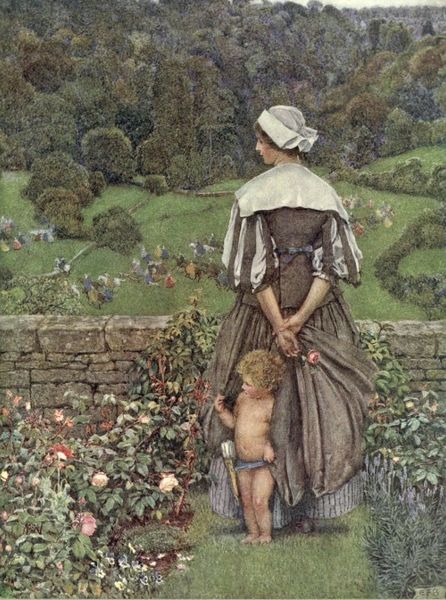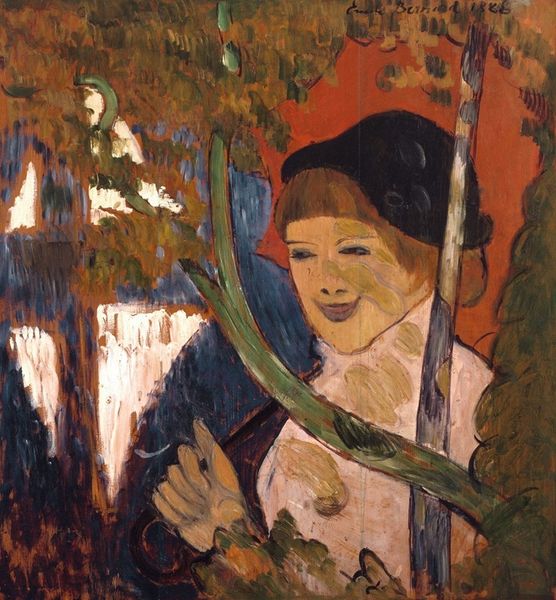
Copyright: Public domain
Editor: This is Childe Hassam’s “Brittany Peasant at the Pardon,” painted in 1897. It's an oil painting, and it strikes me as deeply introspective. The peasant girl seems lost in thought or prayer. What do you see in this piece, particularly regarding its symbolism? Curator: The Pardon itself is key, isn't it? These religious festivals in Brittany, were deeply rooted in pre-Christian Celtic traditions, where sacred spaces and communal purification rituals were paramount. The girl’s lowered gaze and clasped hands—gestures of supplication, perhaps penance – tap into this visual language. Editor: So, it’s more than just a simple depiction of a peasant? Curator: Absolutely. Consider the elaborate headdress. It speaks of regional identity and pride, but also signals her role within the community, especially during such a religiously significant event. Hassam is deliberately placing her within a cultural memory. The background, while impressionistic, suggests a sacred grove, resonating with ancient sites of worship. Doesn't that echo with you? Editor: I didn't catch that, that’s a very good point. So it connects both religious history, regional pride and folklore all at the same time. I was focusing on the aesthetic aspects, missing these layers of meaning! Curator: It is how visual art allows cultural transmission throughout generations. Looking deeply unveils collective identities and memories expressed in subtle ways. The piece reminds us of the power in simple observation and in grasping shared cultural experience, wouldn't you agree? Editor: Yes, it shows how much symbolism is ingrained even in seemingly straightforward scenes of everyday life. Thanks for pointing this out!
Comments
No comments
Be the first to comment and join the conversation on the ultimate creative platform.
